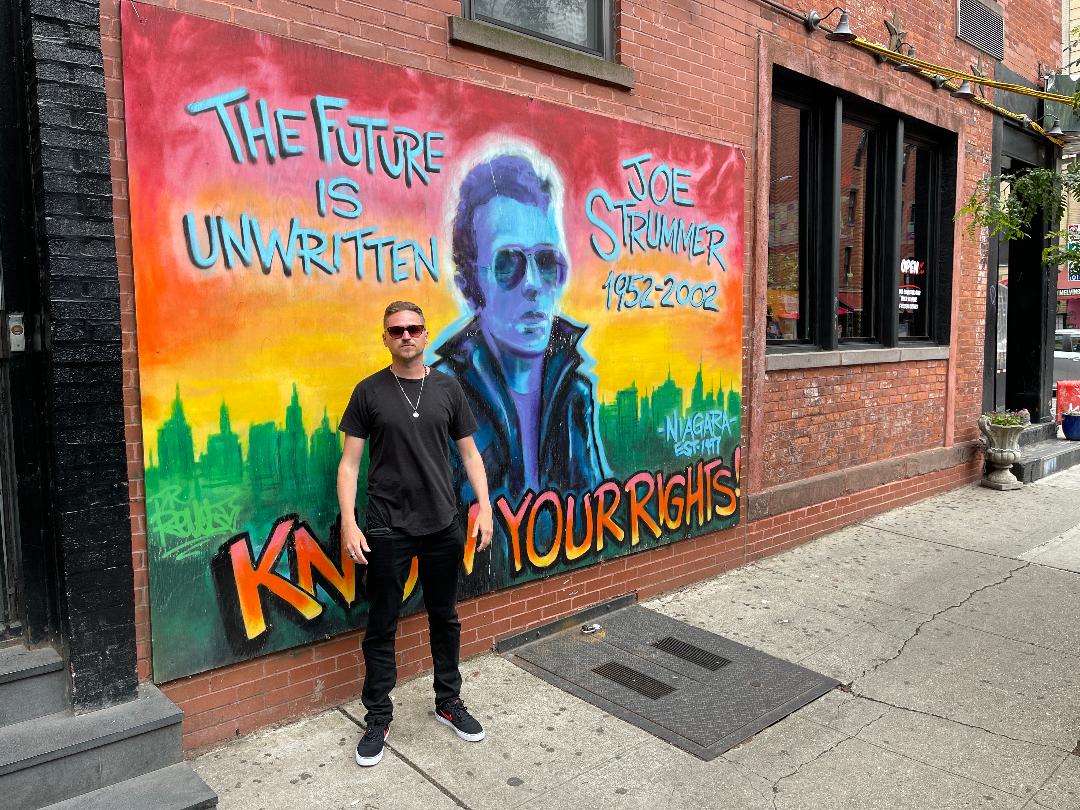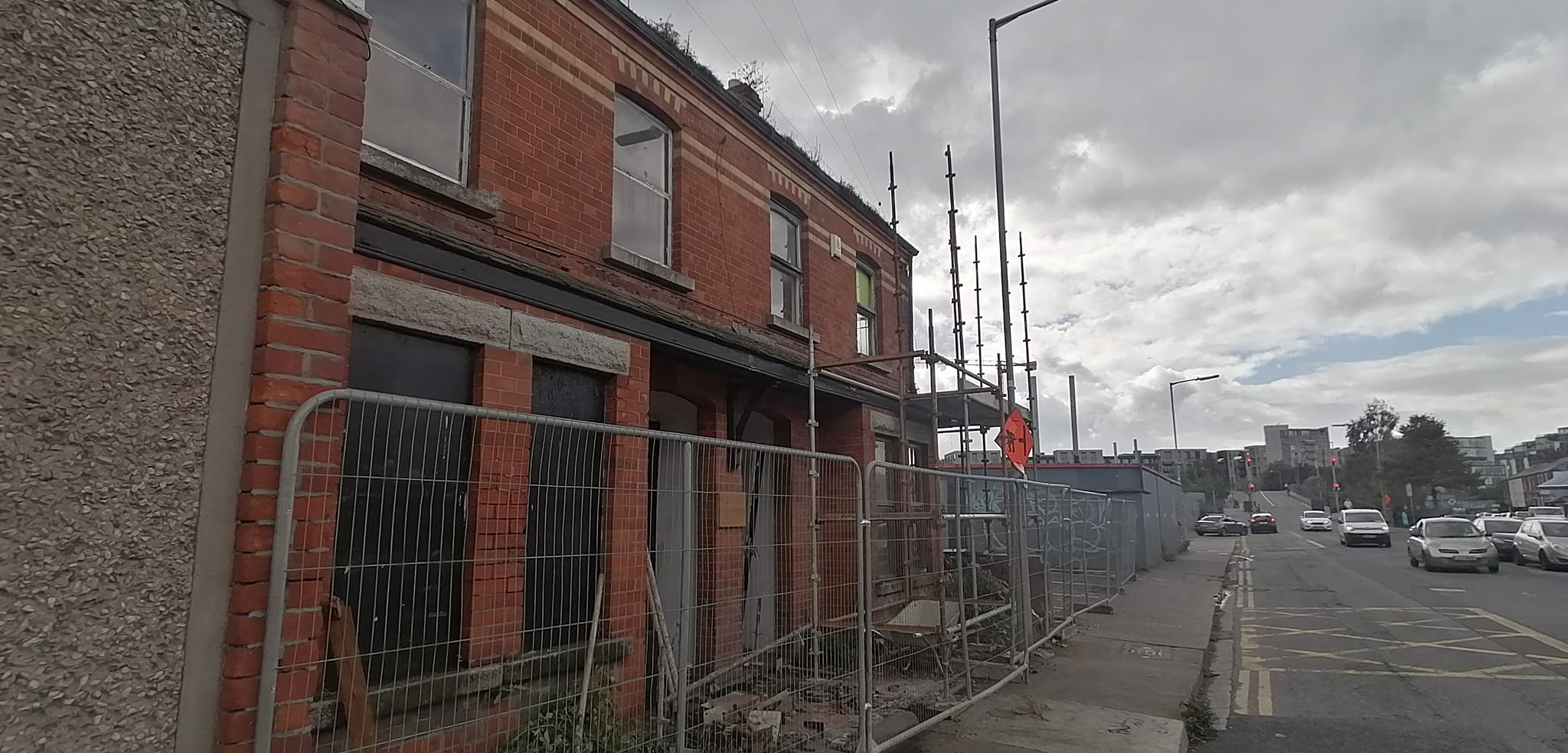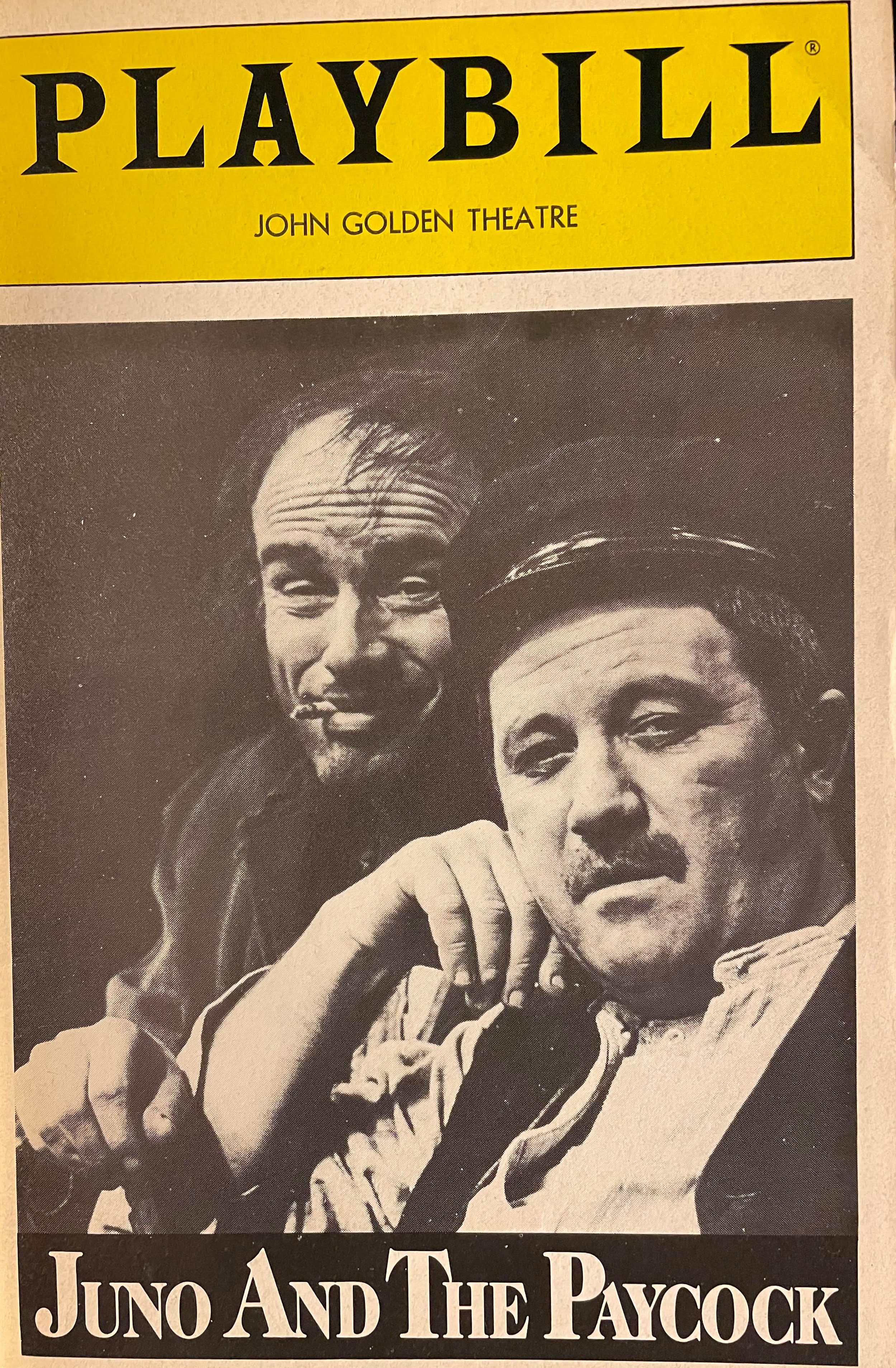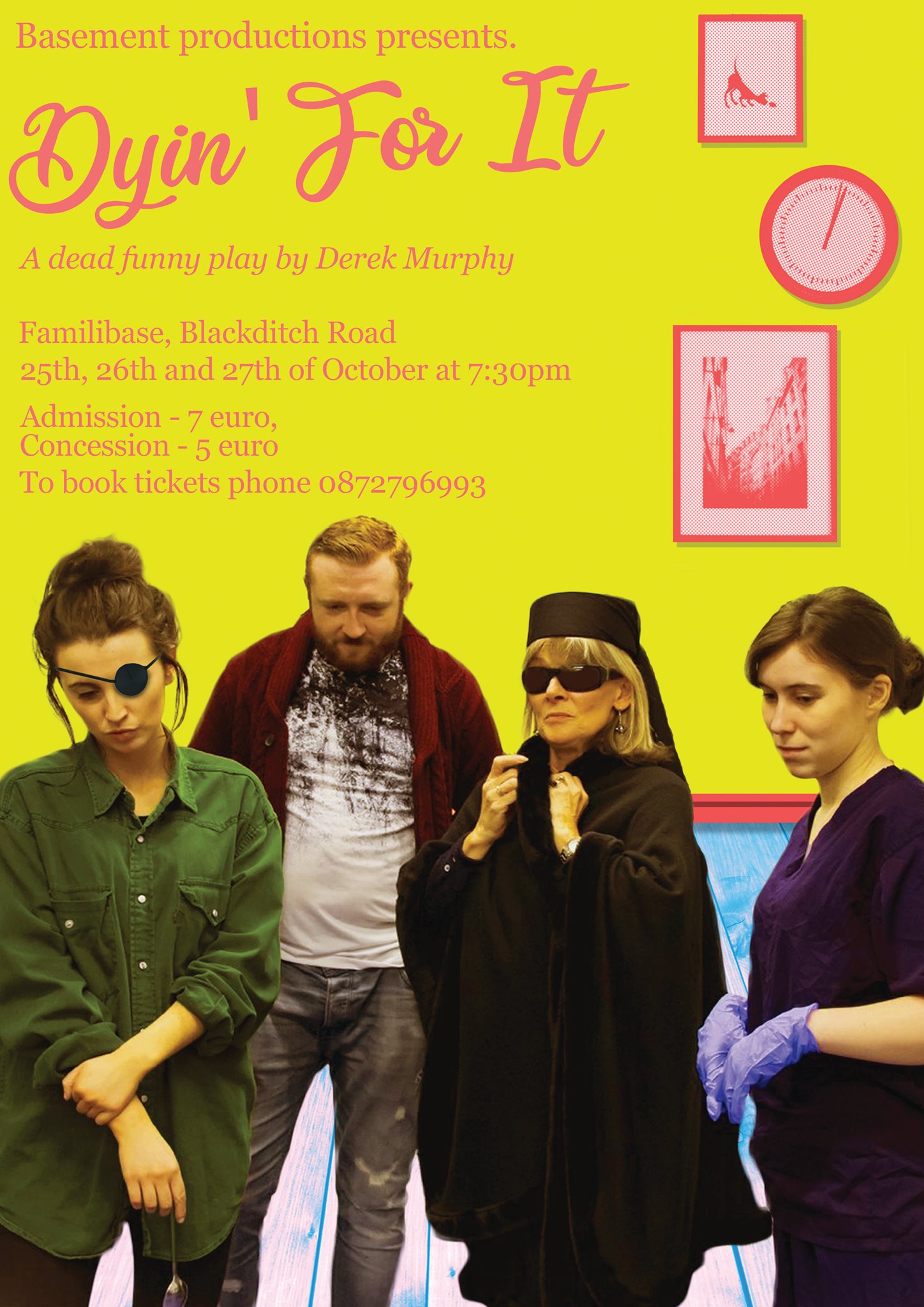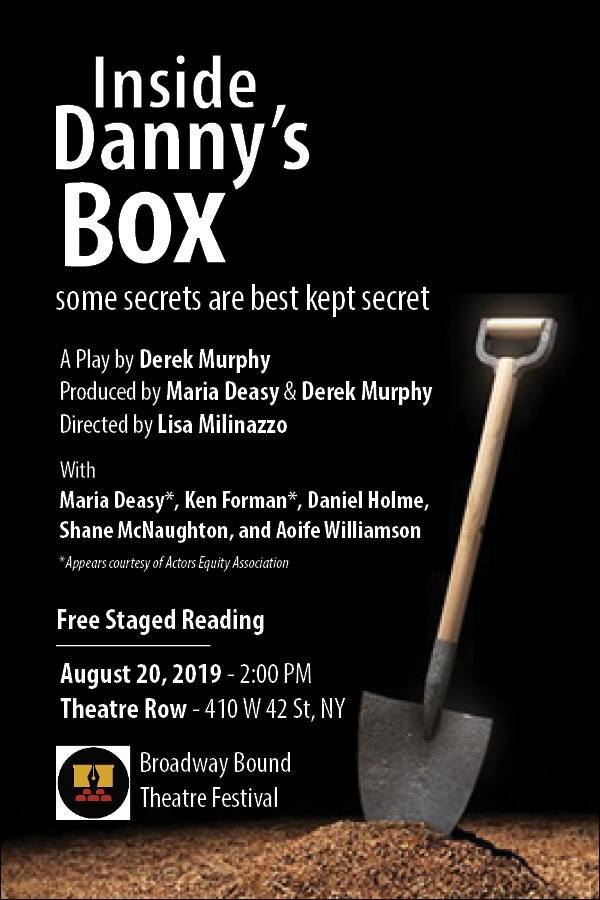Dec 16
Centenary of British military evacuation from Dublin Port: Saturday 17th December 2022
At 3.45pm on 17th December 1922, Captain Henry Robinson was the last of 57,000 British soldiers to leave Ireland since January 1922 as he boarded the SS Arvonia troop ship at Dublin Port.
To mark the 100 years anniversary of the British Army evacuation, Dublin Port Company is delighted to present two events, a drama production and an afternoon of lectures.
Saturday 17th December 2022 :
@ 11am:
Anu Productions will perform a short piece from “Back home to a wonderful time” on Berth 18 where the last troop ship left from, part of the show that will be presented by Dublin Port in 2023
@12pm:
Also to commemorate this occasion Dublin Port Company and East Wall History Group are delighted to host a seminar featuring three excellent speakers:
Liz Gillis – Author and Historian in Residence for South Dublin County Council – The Irish Civil War in the North Inner City.
Paul O’Brien – Military Historian and Author – Sunsets on Empire. The British military withdrawal from the 26 counties of southern Ireland.
Lar Joye – Port Heritage Director, Dublin Port Company – Dublin Port and the Decade of Commemorations.
Both events are FREE but booking is advised.
Tickets here :
https://www.dublinport.ie/erins-farewell-at-the-port-centre/
https://www.dublinport.ie/back-home-to-a-wonderful-time/
Nov 27
“A Bolt From D’Blue” by David Gilna
IRISH PREMIERE ON 1st DECEMBER
David Gilna (‘My Bedsit Window’, ‘The Unsung Hero‘, ‘One For The Ditch’) is coming to the Sean O’Casey Theatre .
Following the success of the World Premiere of his new solo play, ‘A Bolt From D’Blue’ , for the 1st Irish Festival 2022 at the New York Irish Center back in January and sell-out American Summer Tour supported by Culture Ireland, the award-winning Irish Playwright will perform at The Sean O’Casey Theatre on Thursday 1st December 2022.
In this powerful one-man show “A Bolt From D’Blue” David Gilna recounts his early dreams of being a performer, his family history, his first arrival to the US, and, of course, the moment that changed his life forever: being struck by lightning. Gilna deftly guides us through the humor and horror of this near-death experience, weaving the trauma of this life-changing event into a poignant and unforgettable show. For anyone seeking hope or a teary-eyed laugh, “A Bolt From D’Blue” is not to be missed.
TICKETS :
€ 15 General Admission
€ 10 CONCESSION ( OAP, student, unemployed)
https://www.eventbrite.ie/e/a-bolt-from-dblue-by-david-gilna-tickets-443334474347
“David Gilna is a natural storyteller with an amazing story, made all the more powerful because it’s absolutely true. Bolt From D’Blue is a perfect example of what live theatre is about: lifting spirits, bringing people together and inspiring us all. It’s a testament to the power of love and to never stop believing no matter what the odds.”
- Don Creedon (Poor Mouth Theatre Company)
“His 70-minute solo show fluctuates between the horror of his near-death experience and his never-failing humor. He weaves his story with farcical flashes of wit telling anecdotes of his family which serve as bookends to the central event of his life – the giant bolt from the blue. Gilna’s staccato speech with its heavy Swords-Dublin pattern helps to create his unique blend of farce and inspiration. Gilna brings the listener close to tears then within seconds pivots the listener to laugh out loud. “
- Marita Krivda Poxon (Irish Edition, July 2022)
“Exquisitely uplifting, jolting and hysterical, “A Bolt From D’Blue” recites the real-life story of a surreal moment in Gilna’s life when he was struck by lightning in South Boston in 2004, sending him in motion on a life of gratitude, empathy, ambition, and an unyielding love for our time in this world. “
- The Irish Echo
Oct 09
EAST ROAD, EAST WALL :
The recent demolition of a number of houses on East Road cause quite a stir in the community. A common thread was how such unique properties had been allowed to remain largely unused for years until the wrecking ball was ready for them. One of the unique joys of East Wall is the diversity of its architecture, a legacy of small-scale development to meet the needs of a growing workforce in the area. Much of the pre-nineteen twenties houses were constructed by employers for members of their workforce. In some cases, these encompass whole streets such as Merchant’s Road (The Merchant’s Warehousing Company), Fairfield Road (Dublin Dockyard) or New Wapping Street (The London and North Western Railway). In others it was just a small terrace of houses such as Rose Terrace (Collen Brothers), or Pickford Terrace (Pickford’s Haulage Company). The companies may be long gone but the houses of their workers which still remain act as an indelible reminder of the area’s industrial heritage.
A number of people wondered who had lived in the Terrace? What their story was? Sadly, there were no answers. However, the event did bring to mind a previous demolition in 1999 when the development of Teeling Way saw the loss of a house on East Road which had been the home of Billy Woods and Nora Wooloughan. Billy and Nora were the grandparents of the poet Macdara Woods, who although born in Leeson Street, came from a long line of East Wall Sea Captains and had many childhood memories of that house. As the demolition began Woods put pen to paper to record happy childhood memories in his grandparents’ house all of which would soon be erased.
The result was the poem East Road, East Wall from his 2001 collection Knowledge in the Blood. It’s a wonderfully evocative poem of a lifestyle now lost and in tribute to the now forgotten residents of the recently demolished houses we are giving the poem below:
“East Road, East Wall”
there was sunlight in the yard
when I broke my toe
five years of age
fifty years ago
in the hall the Japanese umbrellas
in the parlour
the mandolin and concertina
always sunlight in the yard
and heaps of coal
light from the locomotives
I know
The heat from the fire-box
In Westerns
In the roof there were pointed windows
behind the house
the verandah
trainlines leading to the docks
down there where my green balloon
sailed off
all those years ago
and a journey with my mother
across Dublin
past the Custom House –
Oh don’t put me
in there – I said
don’t ever put me in there –
three of us up
on a donkey and cart
moving my grandfather’s piano
me and my mother
and the one-armed driver
my mother engaged –
piano – mover with a heart condition
anchored in time
and light – a child
in Gandon’s open space
where my
one-legged great-grand-uncle
navigated yet another
nautical academy
the first left sailing empty
abandoned in Belfast
behind us all the afternoon
the East Wall in the sun
the parish register
Of Lawrence O’Toole’s –
recording the marriage of Wooloughan and Dias
and where was she from I wonder
the Iberian name at last
the further I go
the nearer I get
get back to the peninsula
travelling south to Pembroke Street
travelling now to
Clonskeagh
half a century later
across the river and the city
across the Grand Canal
(that’s my house there
in Ranelagh
that’s where my son lives
and I
hold onto this
I think
and that is where I was born
down there
in Upper Leeson Street)
on the anniversary of my father’s death
I am looking toward
Clonskeagh
where my mother is slowly dying
and saying her fragments of prayers
from childhood – oh
in this January month
as always
the trees are bare
I see too clear
In the pumping station
I paused today
there was sunlight in the yard
the engineer says
there is always sunlight here
he says –
not true I know
but I know what he means
for this was a place for photographs
on kitchen chairs
hauled into daylight
my people sat here
afternoons
this week
they began to knock the house
that was Billy Wood’s home:
and Nora Wooloughan’s
the Japanese umbrellas
the mandolin and concertina
the columned clock on the mantle
their three sons
the heap of coal
the puff and steam of locomotives
and the shaking great pump-engines
Gone
outside the bricked-up
parlour window
a palm tree in the earth lives on …
Sep 23
Sean O’Casey, Trouble Pilgrims and the truth!
There’s a great quote often attributed to Joe Strummer of the Clash, describing his musical philosophy as “Three chords and the truth”. He might indeed have said those words (and so too may have Johnny Cash) but in doing so he was quoting a country musician from the 1950′s which is when the phrase originated. It’s a great quote, and just shows how decades apart artists – be they songwriters, musicians, dramatists etc – can be striving to achieve the same effect and with the same intent. And in trying to create something new, part of the process can involve reaching into the past and co-opting what has gone before to create something new. So let’s talk about Sean O’Casey, Trouble Pilgrims and the truth.
When the programme of events for the Sean O’Casey Festival 2022 was being discussed somebody noted the event involving Pete Holidai and Tony St Ledger (Trouble Pilgrims). “That’s an interesting choice” they said, but I knew they really meant “That’s a strange choice”. I can see why they might think that, but I can also see they were wrong, and were missing a very big point.
This is a favoured quote from Sean O’Casey, and I generally incorporate it into my talks or walking tours and will often use it in conclusion, because more than anything else it shows to me the measure of the man. This was in 1919, before he had achieved any notice, let alone fame as a playwright.
“I am sure that many who have known me in the Gaelic League, in the national organisations, and in the Labour movement will readily admit that Sean O’Cathasaigh never hesitated, even to save himself unpleasantness, to speak what he believed to be the truth.”
Essentially, he was going to call it as he saw it and damn the consequences. Now that’s a punk rock attitude if ever there was one.
Sean O’Casey wanted to change the world. He didn’t like what he saw in Dear Dirty Dublin and involved himself with many of the revolutionary currents of his day. He became profoundly disappointed with many trends (and persons) within these movements and became, or made himself, an outsider to the great movements as they moved towards that “Terrible Beauty”. He was not opposed to revolution (and he certainly was not the coward or pacifist he has often been misrepresented as) but he saw the working class as the vanguard for change and felt that the cause of the common-man was being abandoned, often for abstract idealism. As he observed the changing landscape of the revolutionary and counter-revolutionary nation, he made a conscious effort to utilise his art as a tool for change, and he made the stage of the Abbey Theatre a battlefield and his dramas became his weapon. Three acts and the truth? Like he had predicted himself, he didn’t “save himself unpleasantness”. In 1926 he left Dublin, becoming an outsider in the material sense, and only returned for one short visit until his death decades later.
Let’s jump forward half a century to 1976. Ireland was no country for young men. Unemployment was rampant, armed conflict raged, poverty was endemic and for many the well-worn path of the emigrant was their best prospect. Modern Ireland wasn’t much to sing about. But there was that ever present Raidió Éireann jingle to remind us ‘If you feel like singing, do sing an Irish song’, so what do you think happened next ? The Radiators from Space happened next. Four young men from Dublin, they were Ireland’s first ‘punk’ band, and their debut single was the first punk record to reach the top of the charts anywhere in the world. They felt like singing, it was an Irish song, but it was a song for their Ireland-
“I’m gonna smash my Telecaster
Through the television screen
‘Because I don’t like what’s going down”
In the very country, in the very city, and on the very streets O’Casey had left behind him, they too would use their art as a tool for change – the gig halls and airwaves the battleground, with musical instruments their weapon of choice. And sure weren’t some of their earliest live shows in Moran’s Hotel, practically within spitting distance of the Abbey Theatre.
An incredible debut album “TV Tubeheart” followed, and in 1979 the masterpiece that was “Ghost town”. Considered by many to be among the greatest Irish albums of all time, it may have been recorded in London, it may have been produced by Tony Visconti (David Bowie) but it wasn’t just an Irish album – it was Dublin.
Re-released for its 40th anniversary three years ago, Irish music expert Michael Murphy laid some of the lyrical influences bare and placed the album in its correct historical and literary category ie. right up there with the best of them:
“This is profoundly upbeat intricate music with decidedly downbeat inner-city blues lyrics. Here the literary references spark a feeling of euphoria and possibility. There’s lots of Yeats here, including “greasy tills”, “terrible beauty” and “the catch cry of the clown” while Sean O’Casey’s The Shadow Of A Gunman, and James Plunkett’s Strumpet City are mentioned by name. But the Radiators were not wannabe James Joyce’s in Doc Martens, although they referenced his seedy “night town” in Kitty Ricketts’. They were young Dubliners using the best part of Irish culture in their own creations. Is there any better tribute to society’s dead poets than young people grasping their lyrics and weaving them into their own work?”
The band went their separate ways soon after but re-formed for “one night only” in 1987 to play at an ‘Aid-against-Aids’ benefit in Dublin. That night they played some of their greatest tracks, but most importantly debuted a new song “Under Clerys Clock”. Written by Phil Chevron, it was a simple plea that a gay person could meet their date at the traditional spot – under Clerys clock, just ‘like other lovers do”. In an era when Aids was dismissed as a gay plague and homosexuality was still against the law it was a brave song, and certainly historically vital as Irelands first ‘out’ gay love song.
Thankfully the band would abandon the ‘one night only’ idea and would reform, play gigs and record a number of albums in later years. And still relevant, and still Dublin. The 2006 album “Trouble Pilgrim” features the song ‘Huguenot’ which addresses the changing face of Ireland as a nation of Immigrants not emigrants. It challenges the negativity of some of the responses -
“Ancient city on cobblestone
Songs and stories of world fame
From Weavers Square to Mount Jerome
And skipping rhymes from Golden Lane.
But now these streets have new tales to tell
from Georges Dock to Temple Bar
Stand up and tell them who you are”.
With the sad passing of Philip Chevron in 2014, it was agreed that with the loss of their friend and original band member it was time to bring the Radiators to a conclusion, and Trouble Pilgrims emerged to continue the musical journey. It’s two albums later, and when ‘Pilgrims Pete Holidai and Tony St Ledger step onto the stage at the Sean O’Casey Theatre they are bringing with them decades of musical experience and a whole lot of Dublin history. Among the songs written in recent years are many steeped in City history – “Instant Polaroid” recalls the near legendary man on the bridge, “Animal Gang Blues” looks at the dark side of the inner city while “Resurrectionists” revives a grim trade in old Dublin. And of course, they are ever relevant, and like O’Casey are prepared to shine a light on some of the terrible sights of our city – “Heroes of the Night” is dedicated to those who reach out to help the hungry and the homeless who are an ever-present reminder that maybe O’Casey was right, maybe the common man & woman has been abandoned.
“Light a penny candle
For the homeless and the weak
Take a trip to Monto
Windows staring never speak”.
For the first time ever, Tony St Ledger and Pete Holidai at the Sean O’Casey Theatre on Saturday 24th September. They will be joined by very special guest Phelim Drew, for an evening of songs and stories.
There will be more than three chords, and plenty of truth.
Tickets available just 10 euro on the door or via eventbrite .
All proceeds will go to the SAOL Project , supporting and providing a safe space for women experiencing addiction issues in Dublin City.
Sep 03
“From Ballyfermot to New York and to the Sean O’Casey…” – an interview with playwright Derek Murphy
The Sean O’Casey Festival 2022 will feature Basement Productions’ “A Very Irish Killing”, the first time the group has performed at the Sean O’Casey Theatre. It is also the first time a play by Derek Murphy has been performed in East Wall, so we were pleased to have a few words with Derek in advance of his debut here.
SO’C: “We are going to start with a very obvious question – as a Dubliner and a playwright, what does Sean O’Casey mean to you?”
DM: “I was born and raised in Ballyfermot, Dublin. One of my earliest jobs was in a fish and poultry shop in Dorset Street not too far from where Sean O’Casey was born. I didn’t give O’Casey much thought at that time; I was more concerned with how to get rid of the smell of fish. Then, some ten years later, I was living in New York and, at the time, always on the verge of returning home to Dublin. In New York, I went to see the Gate Theatre’s production of Sean O’Casey’s ‘Juno and The Paycock’, with the incredible Donal McCann as Captain Jack Boyle, John Kavanagh as Joxer and Geraldine Plunkett as Juno Boyle. It was, without doubt, a life-changing experience for me. McCann made me want to be an actor, O’Casey made me want to be a playwright. In the end, O’Casey won, and for better or worse, I became a playwright, thus sparing the world the torture, and me the embarrassment, of my sad acting skills.”
SO’C: “That’s interesting, because O’Casey himself tried a bit of acting, too, before settling on the writing end of things. But that’s not the only thing you have in common. Like O’Casey, you left Ireland, but you still write about it and set your plays here?”
DM: “I am delighted to have my play ‘A Very Irish Killing’ in the Sean O’Casey Festival. Dublin means the world to me: Dublin is Ballyfermot, it’s Sean O’Casey, it’s the smell of the Liffey, it’s a quiet pint of the black stuff in a dimly lit pub in the afternoon. Most everything I’ve written takes place in Dublin.”
SO’C: “Can you tell us a bit about ‘A Very Irish Killing’ and what the audience can expect?”
DM: “‘A Very Irish Killing’ was developed in part at the salons produced by IAWA (Irish American Writers & Artists) group in New York. They, of course, have close ties with the Sean O’Casey Theatre themselves. The play takes place in county Dublin on Christmas Eve, 1970. It tells the story of two sisters, June and April O’Brien, and the young handsome killer they’ve hired to kill a certain individual they’ve long since wearied of and prefer be gone. Nothing can go wrong, until everything does.”
SO’C: “It’s interesting that you are so specific about the location and the exact date. How would you classify your plays in terms of genre or style?”
DM: “My plays are often referred to as dark comedies. I think of them all as appalling tragedies, really. Inside that dark lies the tragedy, the heartbreak, and it’s addressed mostly through comedy; it’s how the characters communicate. Jokes are a survival skill for most of the characters I write. A pint and a joke, sure – why not? We all exit the stage in the end. There are no encores, so make the most of your present production, because at the end of the day we are all… fecked.”
SO’C: “You’ve had a good relationship with Basement Productions for some time, and it’s clear that Ballyfermot and Dublin are still very important to you?”
DM: “I began working with Basement Productions and Billy Mangan a few years ago when we did my play “Dyin’ for It”, first in Ballyfermot and later in Smock Alley. I had done this play in New York with some wonderful Irish actors, but it was especially thrilling to do it in Ballyfermot with Ballyfermot actors, as the play actually takes place in Ballyfermot. We’ve also done a weekly radio comedy/drama “Dial M For Mammy” together, as well as a short film, and now we’re doing “A Very Irish Killing”.
SO’C: “We are looking forward to having it as part of this year’s festival and hopefully you’ll be coming back to us in the not-too-distant future. No doubt you have plans for what’s next for you?”
DM: “The future is looking bright. I have a play in New York in January and we may bring back “A Very Irish Killing” to Dublin around Christmas, as the play takes place on a Christmas Eve. As the title would suggest there are not very many presents being exchanged this particular Christmas.”
Derek Murphy’s plays have been produced on both sides of the Atlantic. His plays include, A Short Wake, Stand Up Man, Appendage, Dyin’ for It, Inside Danny’s Box, The Love Parts, Squares, The Betty Kiss, and The Good Dress.
Thanks to Derek Murphy for taking the time to chat with us. We hope you can join us on Monday 20th and Tuesday 21st for “A Very Irish Killing” as part of the Sean O’Casey Festival 2022.
Sep 02
“OFF THE METER – ON THE RECORD” by John McDonagh
Driving New York Crazy for 40 years …
… NEXT STOP DUBLIN !
John McDonagh is a radio host, a member of Irish American Writers & Artists (IAW&A), and has been driving a NYC yellow cab for nearly four decades. This occupation has provided the raw material for his critically acclaimed one man show.
Directed by Ciarán O’Reilly, the show takes the audience on a roller coaster ride through the good, the bad and the ugly of the city that never sleeps, told by a man who has seen it all. He even had to teach “Top Gear” star Richard Hammond how to survive as a cabbie in New York and took Stephen Fry to meet the real life ‘Goodfellas’ in his neighbourhood.





